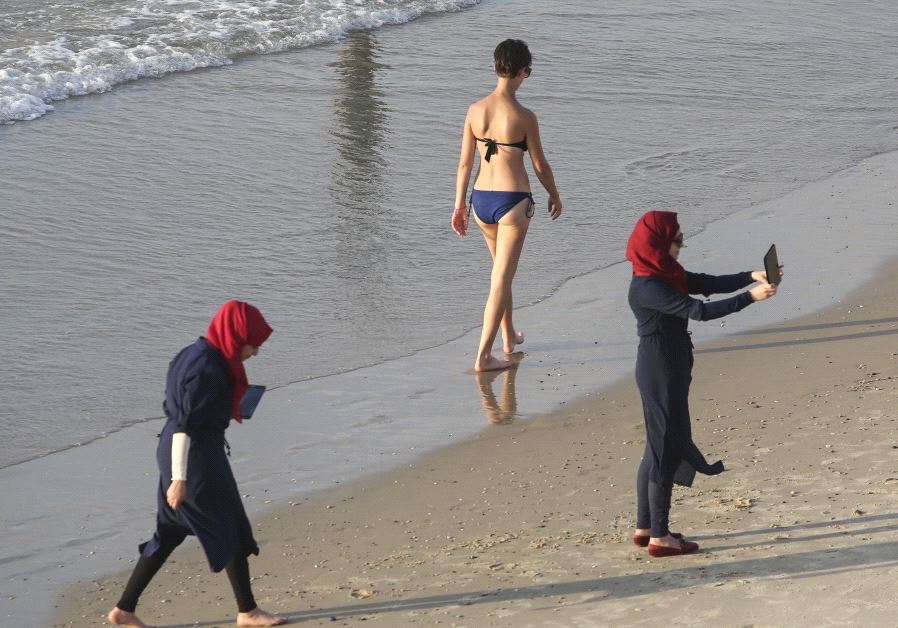Trying to beat the Middle Eastern heat… modestly
For Orthodox Jewish women, tzniut, or modesty, involves wearing shirts that cover the collar bone and have three-quarter sleeves past the elbows.
 Arab women wearing burkinis at a beach in Tel Aviv(photo credit: MARC ISRAEL SELLEM)ByTARA KAVALER/THE MEDIA LINE
Arab women wearing burkinis at a beach in Tel Aviv(photo credit: MARC ISRAEL SELLEM)ByTARA KAVALER/THE MEDIA LINE